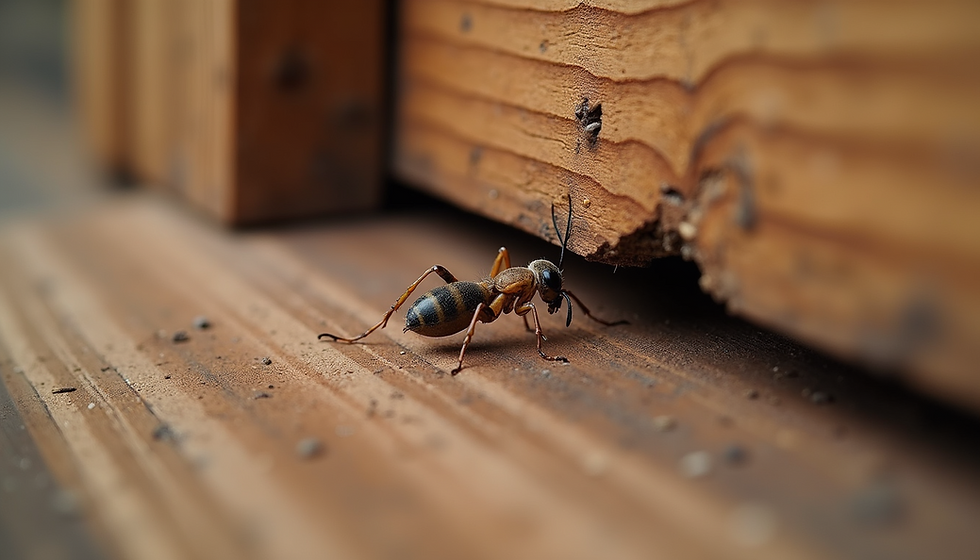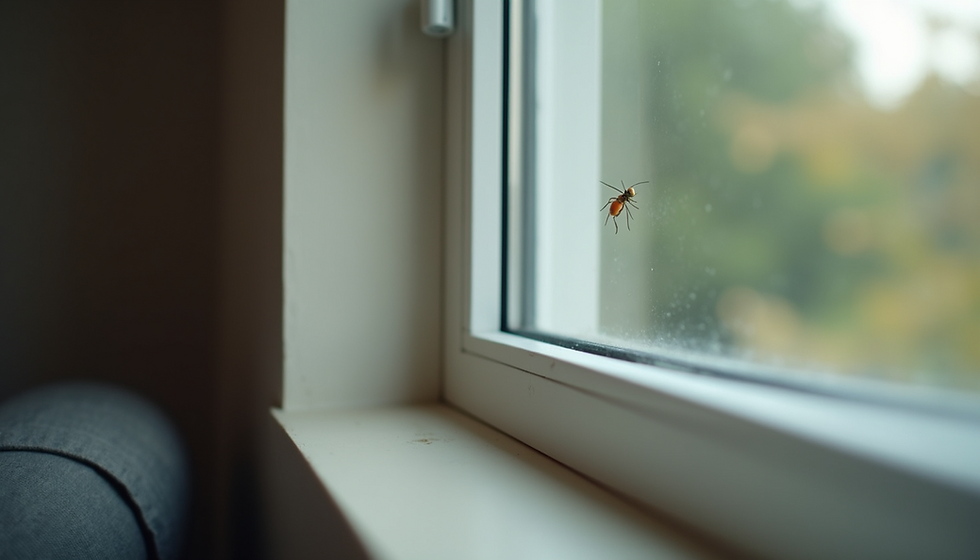Creating a Pest-Free Environment for Your Business
- Gorilla Pest

- Jul 14
- 4 min read
Running a business entails a myriad of responsibilities, one of which is ensuring a pest-free environment. The presence of pests can lead to health hazards, property damage, and a tarnished reputation. Therefore, creating a pest-free environment should be a priority for every business owner. Below are some effective strategies to keep your business pest-free.
Understanding the Importance of Commercial Pest Control
Pests pose significant threats to commercial properties, causing financial losses and impacting customer satisfaction. From rodents to insects, any infestation can disrupt operations, leading to decreased productivity. According to the National Pest Management Association, businesses spend billions annually on pest control services. Investing in effective pest management is essential for protecting your investment and ensuring a safe environment for employees and customers.

Best Practices for Maintaining a Pest-Free Environment
Regular Inspections: Conduct regular pest inspections to identify early signs of infestations. Hire a professional pest control service to perform these inspections, ensuring you cover all potential entry points for pests.
Proper Waste Management: Ensure that garbage is disposed of regularly and stored in sealed containers. Pests are often attracted to food waste. Keeping your business clean minimizes their chances of finding food.
Sealing Entry Points: Inspect your premises thoroughly for any openings through which pests can enter. Seal cracks around windows, doors, and foundations. This simple preventive measure can significantly reduce the likelihood of an infestation.
Maintain Landscaping: Keep the surrounding landscape well-trimmed and free of debris. High grass and overgrown bushes can serve as habitats for pests. Ensuring that plants are maintained not only adds to the aesthetic appeal but also reduces pest population.
Educate Your Staff: Train your employees on the importance of maintaining a pest-free environment. Implement protocols for reporting pest sightings and ensuring cleanliness.

What is the hardest pest to get rid of?
Certain pests are notoriously difficult to eradicate. Termites, for instance, can cause significant structural damage to wooden structures and often go unnoticed until it is too late. Bed bugs are another challenging pest, known for their resilience to common treatments and ability to hide in tiny crevices. It's essential to use a comprehensive pest control plan that includes professional expertise when dealing with such pests.
The challenge arises from their breeding rates and capacity to adapt to various environmental conditions. For effective extermination, specialized treatment often requires a blend of bait, insecticides, and monitoring.
Creating a Long-term Pest Management Plan
A long-term pest management plan is essential for ensuring the ongoing safety of your business. Here are key components to consider:
Set Regular Schedules for Inspections: Schedule routine inspections with a pest management provider who can adapt strategies based on your business needs.
Environment Control: Reduce moisture levels and avoid overcrowding in storage areas. Pests like termites and mosquitoes thrive in humid environments.
Implement Integrated Pest Management (IPM): IPM is a sustainable approach that combines various management strategies. These can include biological control, habitat management, and the use of pesticides only when necessary.
Maintain Records: Keep detailed records of any pest sightings, inspections, treatments performed, and any environmental changes. This information can aid in identifying trends and optimizing pest control strategies.
By having a robust pest management plan in place, you ensure that you remain proactive rather than reactive in dealing with pests.

Working with Professional Pest Control Services
Partnering with professional pest control services can significantly simplify the process of maintaining a pest-free environment. These experts have the knowledge, training, and resources to manage pest issues effectively. When selecting a pest control provider, consider the following:
Experience and Reputation: Look for a company that has a good reputation and extensive experience in dealing with commercial pest control. Online reviews and word-of-mouth recommendations can be invaluable sources of information.
Customized Solutions: Every business has unique needs. Ensure the provider is willing to customize a pest management plan based on your specific circumstances.
Sustainable Practices: Choose a company that uses environmentally-friendly pest control methods. This approach not only protects the environment but also ensures the safety of your employees and customers.
Emergency Services: It is crucial to have access to emergency pest control services. An infestation can occur at any moment, and you should have a reliable service that can promptly respond to your needs.
Remember, an investment in professional pest control services is an investment in the health and success of your business. For businesses in Waco, consider reaching out to Commercial pest control Waco for tailored solutions.
Monitoring and Ongoing Maintenance
Creating a pest-free environment does not end with an inspection or treatment. It requires ongoing monitoring and maintenance. Regularly review your pest management plan and adjust strategies based on new challenges or changes in your business environment.
Persistent Monitoring: Use traps and bait stations as monitoring tools for identifying potential pest activity before it escalates.
Employee Input: Encourage staff to report unusual sightings or activities related to potential pests. Empowering employees makes them an active part of the pest control process.
Feedback Loop: After treatments are performed, follow up to assess the effectiveness. Modify your pest management strategies as necessary.
In conclusion, creating a pest-free environment for your business is not just about immediate action but about implementing a comprehensive, proactive, and sustainable approach. With the right practices, vigilance, and professional help, you can ensure that your business remains a safe and welcoming space free from pest threats.


